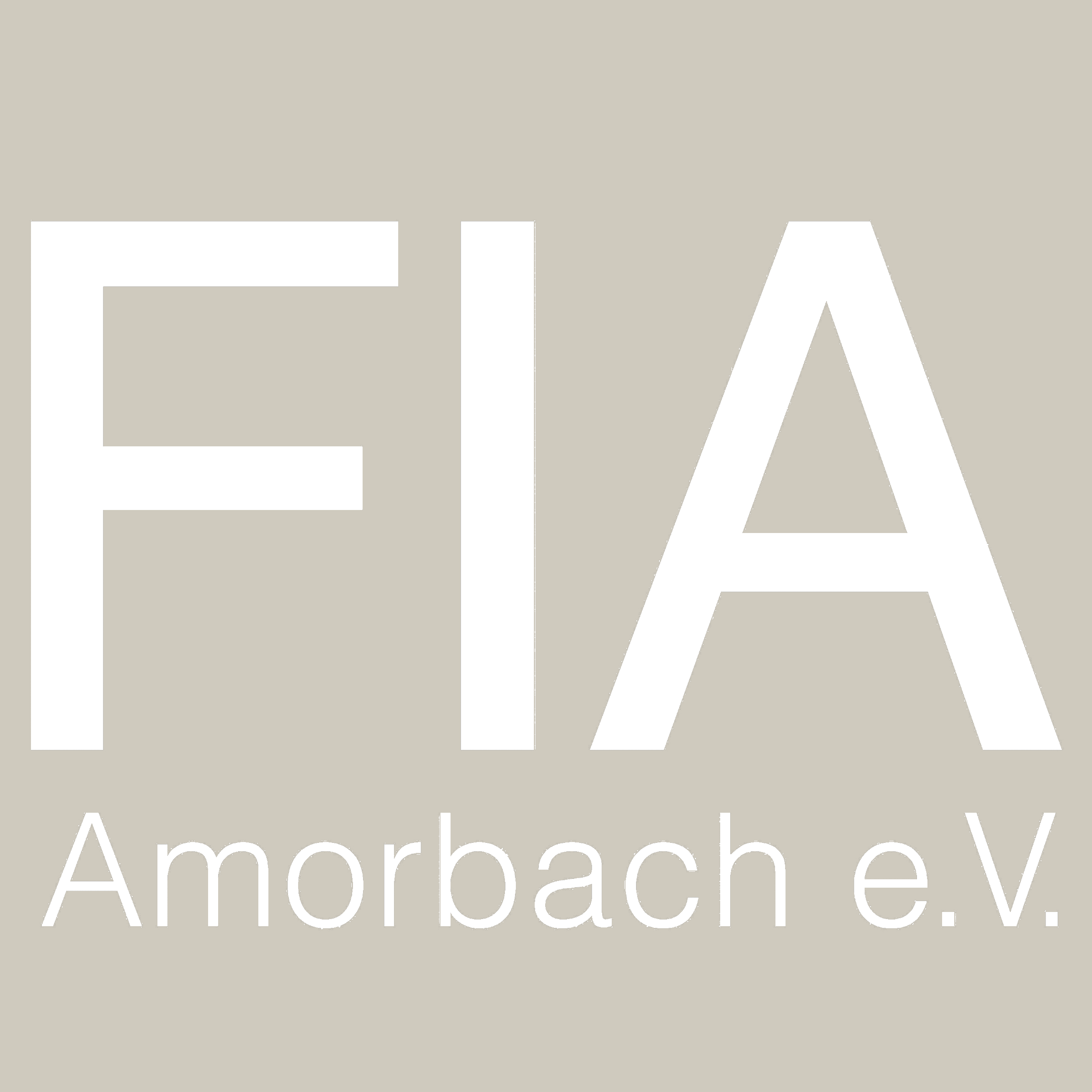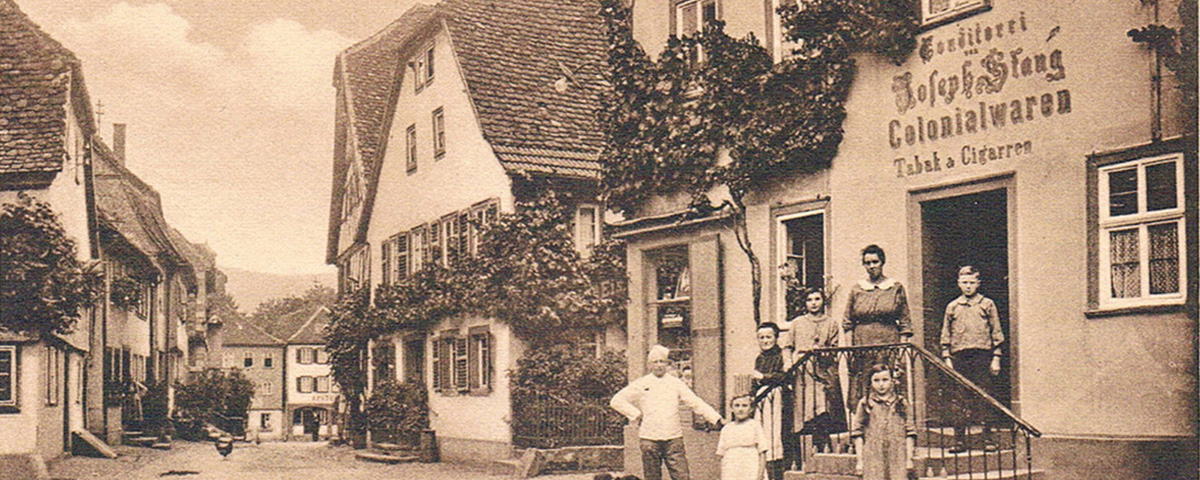Königliches Amtsgericht Amorbach, ehemalige Kurfürstliche Mainzer Kellerei, erbaut 1482-1504. Das Haus diente lange Zeit als Gerichtsgebäude.
Besonders schön ist der Eingangsbereich mit großem Tor und schönem Wiesenstück mit Blick auf das Museum, ein beliebtes Motiv für Maler. Das Museum beherbergt alte geschichtliche Kulturschätze aus Amorbach und der nächsten Umgebung. Zur Zeit ist es leider geschlossen.
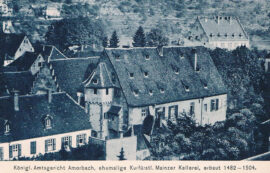
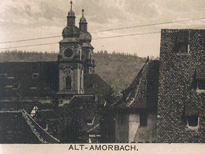
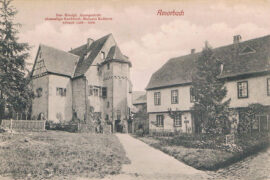
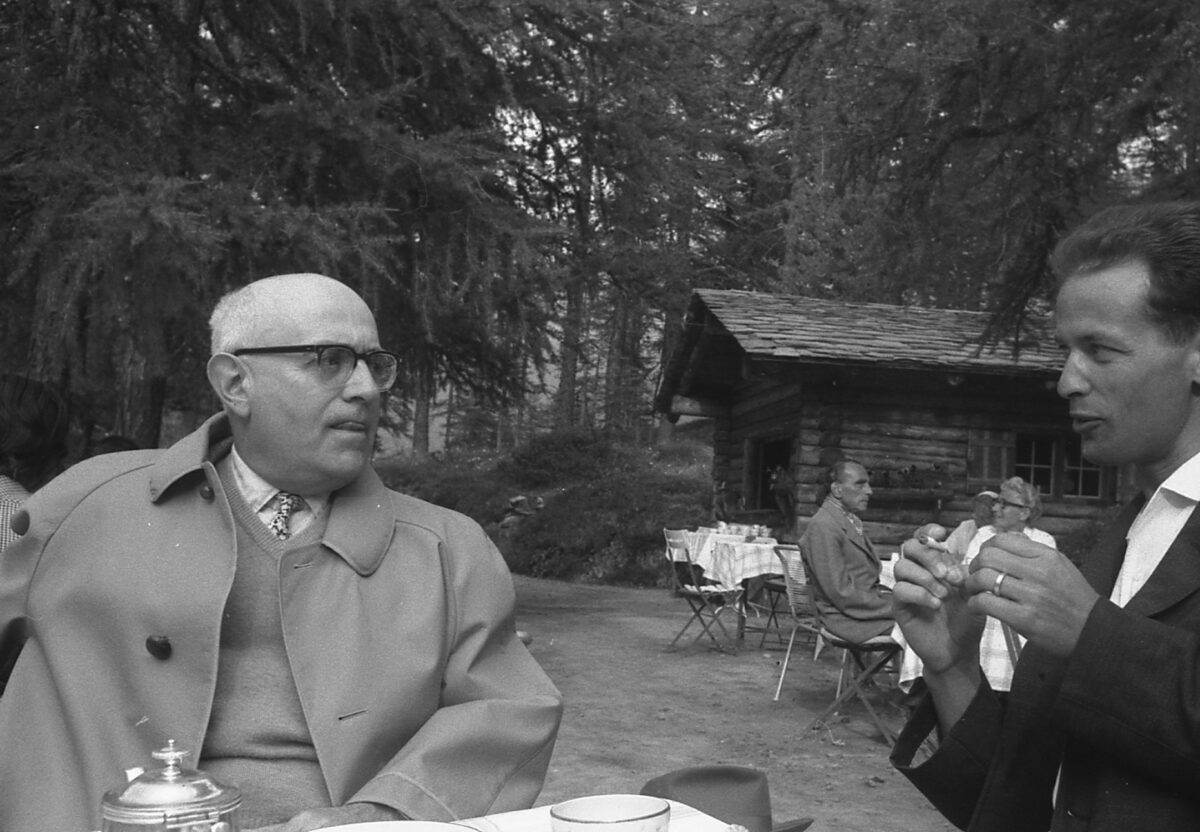
„Ist man dann wieder in Europa, so ähneln plötzlich auch hier die Ortschaften einander, deren jede in der Kindheit unvergleichlich schien; sei es durch den Kontrast zu Amerika, der alles andere unter sich plattwalzt, sei es auch, weil, was einmal Stil war, schon etwas von jenem normierenden Zwang besaß, den man arglos erst der Industrie, zumal der kulturellen, zuschreibt. Auch Amorbach, Miltenberg, Wertheim sind davon nicht ausgenommen, wäre es auch nur durch den Grundton roten Sandsteins, der Formation der Gegend, die den Häusern sich mitteilt.“
Theodor W. Adorno, Ohne Leitbild – Parva Aesthetica – AMORBACH, Seite 23
Museum of Local History
Royal District Court of Amorbach, former Electoral Mainz Winery, built 1482-1504, the house served as a courthouse for a long time. The entrance area with its large gate and beautiful meadow with a view of the museum, a popular motif for painters, is particularly beautiful. The museum houses old historical cultural treasures from Amorbach and the surrounding area. Unfortunately it is closed at the moment.
„Once you are back in Europe, the towns and villages all at once resemble one another too, each of which, during childhood, seemed incomparable: be it by their contrast to America which flattens everything beneath itself, be it also because what had been style at one time already possessed something of that normative compulsion which, naively, one imputes to industry, particularly the cultural one. Neither are Amorbach, Miltenberg and Wertheim exceptions to this, be it only because of the basic color of red sandstone, the formation of the area, that communicates itself to the houses.“
Theodor W. Adorno, Ohne Leitbild – Parva Aesthetica – AMORBACH, page 23
Zitat aus: Theodor W. Adorno, Ohne Leitbild – Parva Aesthetica – AMORBACH, Seite 23
Portraitfoto: Theodor W. Adorno, © Elisabeth Becker, 1961
Fotos: kurzarchiv, abbarchiv
Übersetzungen: Annette Allwardt
Video: Anna Tretter, Carolyn Krüger
